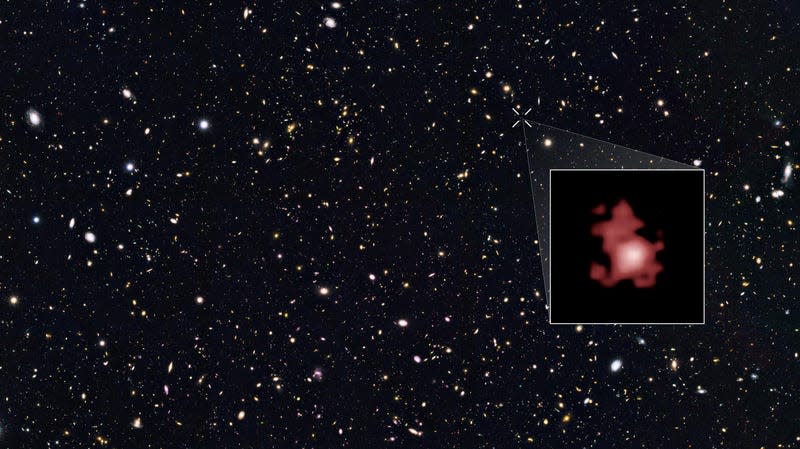Behold: The Oldest Black Hole Ever Found

A team of researchers found a black hole from the early universe, prompting new questions as to how such ancient massive objects might form. The black hole dates to about 400 million years after the Big Bang—the start of the universe as we know it—making the object over 13 billion years old. The universe itself is 13.77 billion years old.
This black hole is in the galaxy GN-z11, a blotch of light in the distant cosmos. GN-z11 is only about 1% the size of the Milky Way, and the ancient black hole sits at its core. The team’s research describing the object was published today in the journal Nature.
Read more
Dan Quinn has gone from top coaching candidate to consolation prize overnight
Toyota Is Moving A Prewar 700-Ton Press Machine Halfway Around The World
Richard Simmons once again politely asks the world (and Pauly Shore) to leave him the hell alone
“It’s very early in the universe to see a black hole this massive, so we’ve got to consider other ways they might form,” said Roberto Maiolino, an astrophysicist at the University of Cambridge and the Kavli Institute of Cosmology, in a university release. “Very early galaxies were extremely gas-rich, so they would have been like a buffet for black holes.”
Last year, the Webb Space Telescope spotted the farthest (which is to say, most ancient) active supermassive black hole, which dated to about 570 million years after the Big Bang. In other words, the difference between the two objects’ ages is the same as between today and the Jurassic Period.
Maiolino noted that Webb’s remarkable sight could reveal more black holes from the early universe in the years ahead. Finding similar black holes to the one at the core of GN-z11—which is to say, relatively petite and very ancient—could help reveal how black holes form and grow.
More: Bent Light in Deep Space Reveals One of the Biggest Black Holes Ever Detected
More from Gizmodo
Aaron Rodgers and Pat McAfee are proof that ESPN only wanted Black talent to ‘stick to sports’
World's Largest Cruise Ship Has Twenty Decks, But Barely Any Of It Sits Below The Water
If You Had To Buy A Car Today To Last 250,000 Miles, What Would You Buy?
Sign up for Gizmodo's Newsletter. For the latest news, Facebook, Twitter and Instagram.

